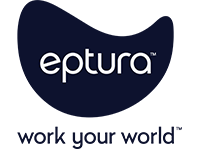
In the workplace, simply rolling out new technology isn’t enough. With a staggering 92% of companies operating under a hybrid model in 2024, success now depends on how well employees adopt technology in a fragmented environment.
This adoption hinges on trust, clarity, and ease of use—and this is where a modern Acceptable Use Policy (AUP) becomes an essential strategic tool.
Key takeaways
- Acceptable Use Policies are no longer just for IT. They are strategic documents that build trust and drive technology adoption in the hybrid workplace.
- The rise of AI and a persistent trust deficit make clear, transparent AUPs more critical than ever for mitigating risk.
- Involving employees in the creation and evolution of your AUP can transform it from a list of rules into a catalyst for a culture of shared responsibility.
An AUP is far more than a rulebook. It defines how employees should use workplace technology like networks, devices, applications, and internet access, whether they’re on-site or remote.
Done right, a contemporary AUP reduces risk, strengthens accountability, and encourages people to fully and confidently embrace the tools you’ve invested in.
Why AUPs are critical in the workplace
The hybrid model has irrevocably blurred the line between personal and professional technology use. This new reality, combined with the explosive growth of generative AI, has created a perfect storm of risk and opportunity.
While 56% of office workers now use AI tools at work, a significant number are doing so in a policy vacuum. This creates a significant “trust deficit.” Research reveals that 71% of employees believe they should have more influence over technology decisions, yet only 37% feel they actually do.
This disconnect is palpable, with 59% of managers admitting they can’t fully trust workers without digital monitoring, while 68% of employees express concern about that very monitoring.
Without a clear AUP, employees inadvertently expose sensitive data. They might log into unsecured Wi-Fi, use personal devices without proper safeguards, or turn to unsanctioned “shadow IT.”
In fact, a stunning 50% of the U.S. workforce uses AI tools without knowing if it’s permitted, and 63% knowingly use AI improperly. These aren’t just minor missteps; they can lead to costly data breaches, compliance violations, and severe reputational damage.
A modern AUP serves as a proactive safeguard by:
- Establishing clarity. It removes ambiguity, so employees know what’s expected when they use company devices and apps
- Building trust through transparency. It explains the “why” behind the rules, especially concerning data monitoring, which can alleviate employee concerns
- Promoting responsible innovation. Instead of outright banning new tools, it creates a framework for their safe and effective use
The impact goes far beyond security. When employees understand the rules and feel they are part of the conversation, they feel more confident using workplace technology — and that confidence is the bedrock of adoption.
Risk mitigation through clear, data-informed guidelines
One of the most valuable aspects of an AUP is its role in mitigating the significant financial risks of the modern workplace. The average cost of a data breach has reached an all-time high, and a single incident can have devastating financial and reputational consequences.
Consider a remote worker who, trying to be productive, downloads an unsanctioned AI-powered transcription service to summarize a confidential client meeting. Without a clear policy, this employee believes they are innovating, but in reality, they may have just uploaded sensitive corporate data to an unsecured third-party server.
A well-structured AUP closes these gaps by:
- Outlining approved applications and platforms. Clearly listing sanctioned tools and providing a process for requesting and evaluating new ones
- Defining safe practices for all environments. This includes rules for personal devices (BYOD), public Wi-Fi, and the use of generative AI
- Educating employees. Proactively teaching staff how to recognize and report potential threats, turning them into a human firewall
This proactive approach helps companies avoid the staggering costs of data breaches while meeting compliance requirements. It frees up IT teams to focus on strategic growth instead of constantly reacting to preventable incidents.
From enforcement to engagement: Building a culture of responsibility
For a policy to be effective, it must be embraced, not just enforced. The goal is to create a culture of shared responsibility, and this starts with involving employees in the process.
Given that 71% of employees want more say in tech decisions, the AUP itself presents a powerful opportunity for engagement. A strong strategy for building this culture includes:
- Explaining the “why.” Frame the policy as a tool for protection and empowerment, not just restriction. Explain how it safeguards both the company and the employee.
- Co-creating the policy. Involve a cross-section of employees in drafting and reviewing the AUP. This builds buy-in from the start.
- Maintaining flexibility and frequency. The technology landscape changes constantly. An AUP should be a living document, updated at least annually to address new tools and risks.
Workplace technology should support this culture. Workplace platforms offering single sign-on (SSO), role-based permissions, and automated updates make compliance the path of least resistance, embedding the AUP’s principles into daily workflows.
How clear policies drive confident adoption
Technology adoption often fails not because the tool is flawed, but because employees lack the psychological safety to explore it. A clear, well-communicated AUP removes this uncertainty and builds the trust necessary for genuine adoption.
This clarity is essential. When employees are unsure about the rules, they either avoid new tools altogether or, as the data shows, take them “underground.” A transparent AUP that addresses employee concerns head-on creates a win-win: employees feel confident and protected, and IT leaders benefit from stronger compliance and governance.
Consider global beauty retailer Sephora. As the company grew rapidly, it faced the challenge of constant office reorganizations. By leveraging a centralized workplace platform, Sephora streamlined the process, ensuring employees stayed connected and supported. This clarity and support through a platform aligned with their operational policies allowed the company to focus on growth, not logistical headaches.
Evaluating technology for AUP alignment
Before adopting any new workplace technology, it’s critical to ensure it supports your AUP. Ask vendors these key questions:
- How is our data protected? Look for details on encryption, storage, and access protocols
- Can permissions be customized? Role-based access is crucial
- How are vulnerabilities handled? Look for regular penetration testing and clear patch management policies
- Does it integrate with our governance tools? SSO integration is non-negotiable
- What reporting features are available? Audit trails are essential for demonstrating compliance
By aligning technology choices with your AUP from the start, you create a cohesive ecosystem where policy and practice are one and the same.





